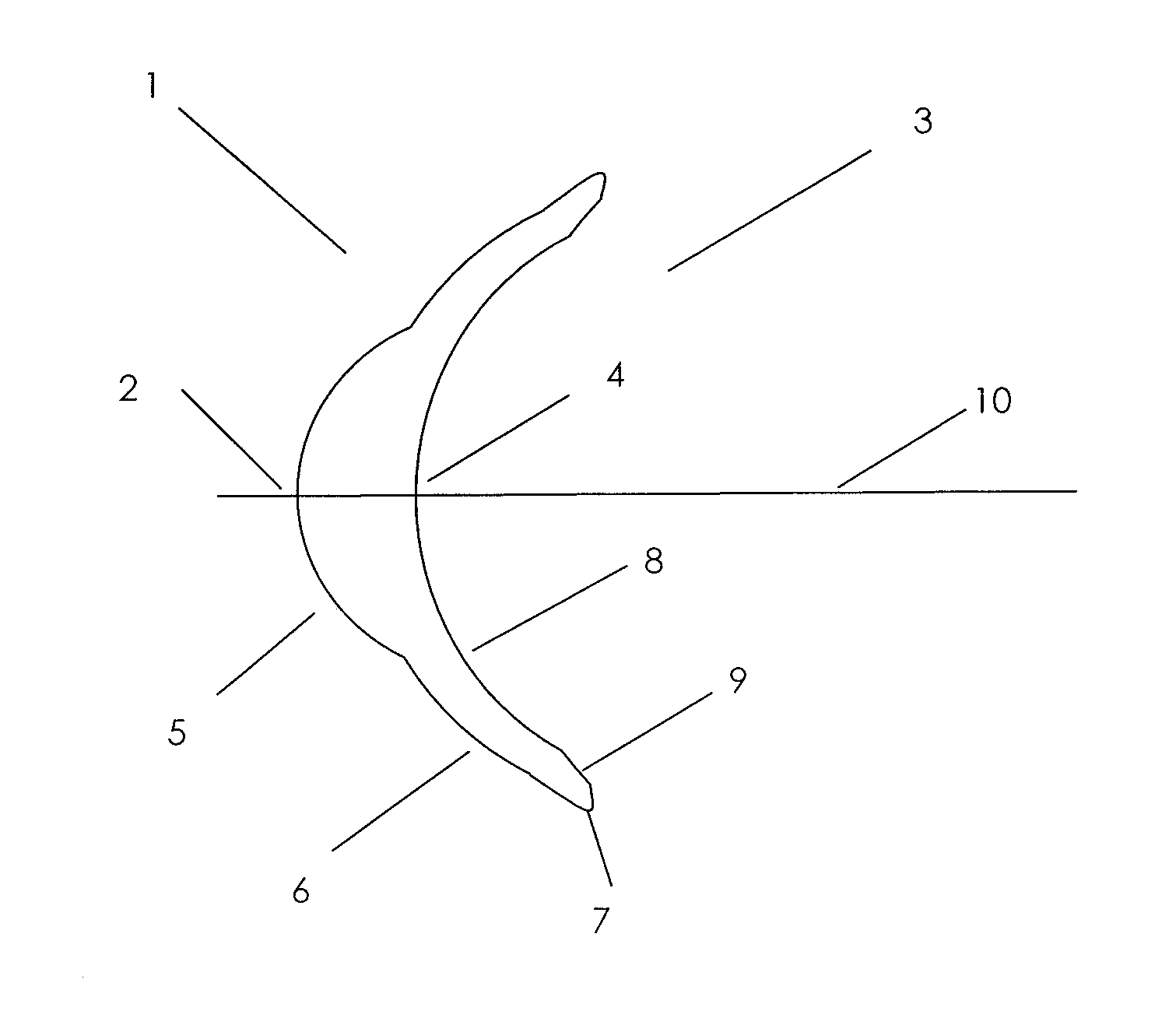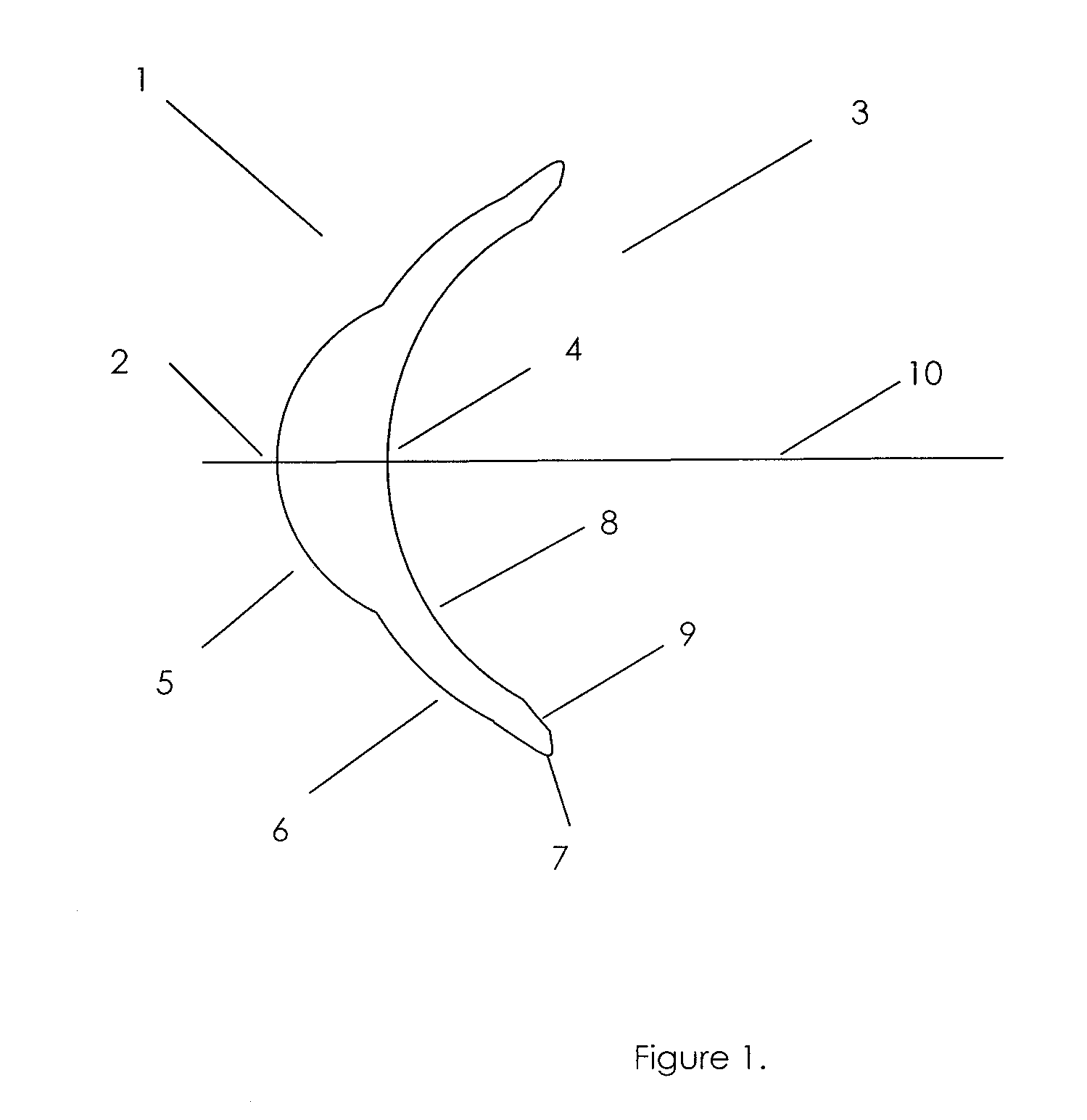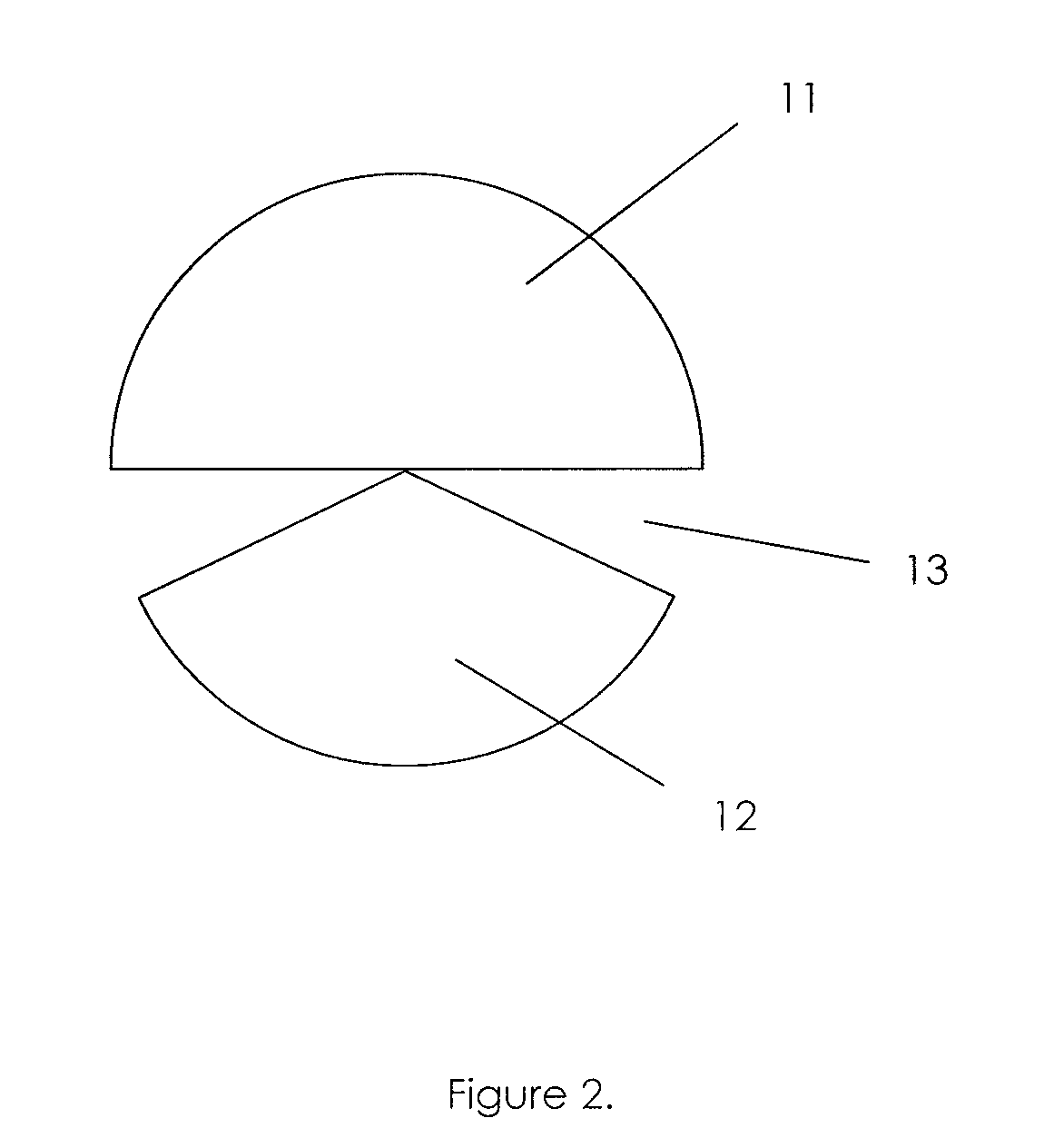Aspheric, astigmatic, multi-focal contact lens with asymmetric point spread function
a contact lens and astigmatic technology, applied in the field of human vision correction, can solve the problems of significantly affecting vision quality, stray light such as this is often objectionable, and the eye's focusing error may not be the same for each meridian of the eye, so as to achieve the effect of improving vision quality
- Summary
- Abstract
- Description
- Claims
- Application Information
AI Technical Summary
Benefits of technology
Problems solved by technology
Method used
Image
Examples
Embodiment Construction
[0023]Detailed embodiments of the instant invention are disclosed herein, however, it is to be understood that the disclosed embodiments are merely exemplary of the invention, which may be embodied in various forms. Therefore, specific functional and structural details disclosed herein are not to be interpreted as limiting, but merely as a basis for the claims and as a representation basis for teaching one skilled in the art to variously employ the present invention in virtually any appropriately detailed structure.
[0024]The preferred basic optical design of the contact lens is illustrated in FIGS. 1, 2, 3, and 4. FIG. 1 represents the basic structure of the contact lens. FIG. 2 represents the optical zone of the front surface of the contact lens to provide multi-focal correction. FIG. 3 represents the optical zone of the back surface of the contact lens to provide astigmatic correction. FIG. 4 illustrates optionally adding front surface ballast to orient a multi-focal or astigmatic...
PUM
 Login to View More
Login to View More Abstract
Description
Claims
Application Information
 Login to View More
Login to View More - R&D
- Intellectual Property
- Life Sciences
- Materials
- Tech Scout
- Unparalleled Data Quality
- Higher Quality Content
- 60% Fewer Hallucinations
Browse by: Latest US Patents, China's latest patents, Technical Efficacy Thesaurus, Application Domain, Technology Topic, Popular Technical Reports.
© 2025 PatSnap. All rights reserved.Legal|Privacy policy|Modern Slavery Act Transparency Statement|Sitemap|About US| Contact US: help@patsnap.com



